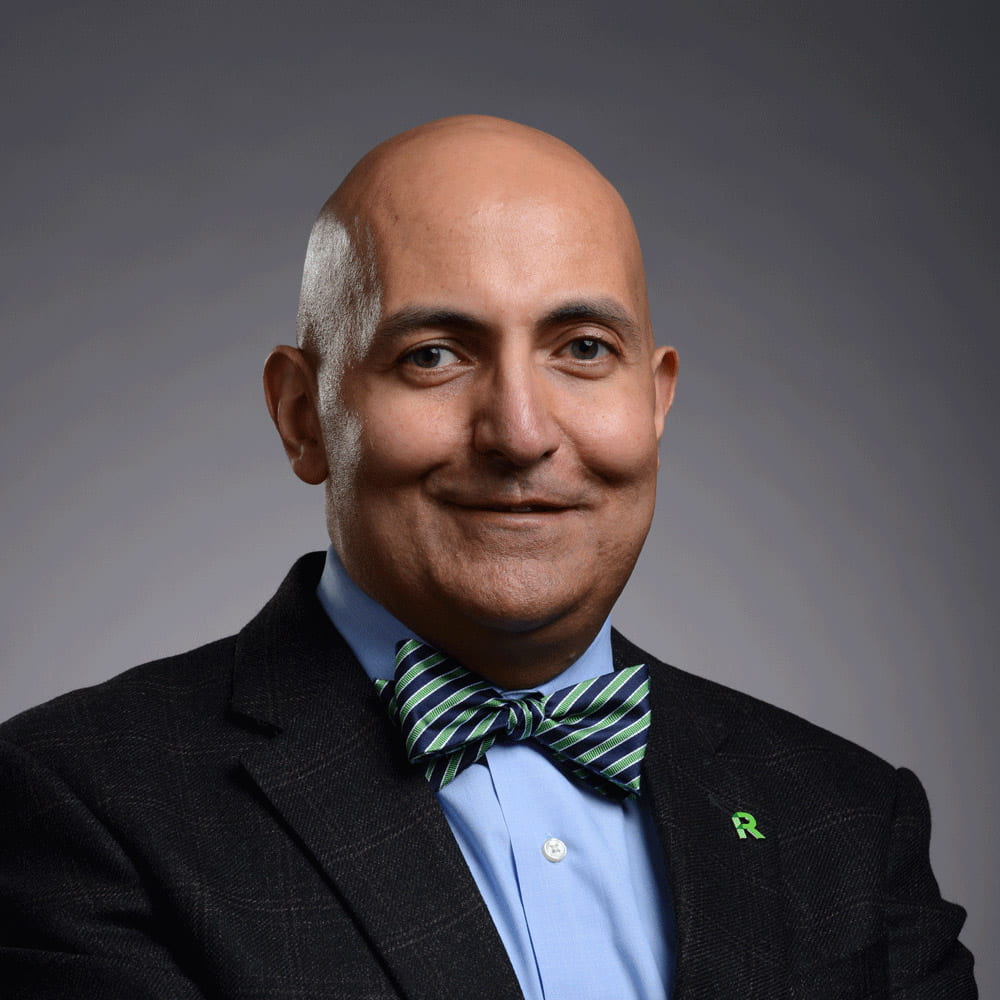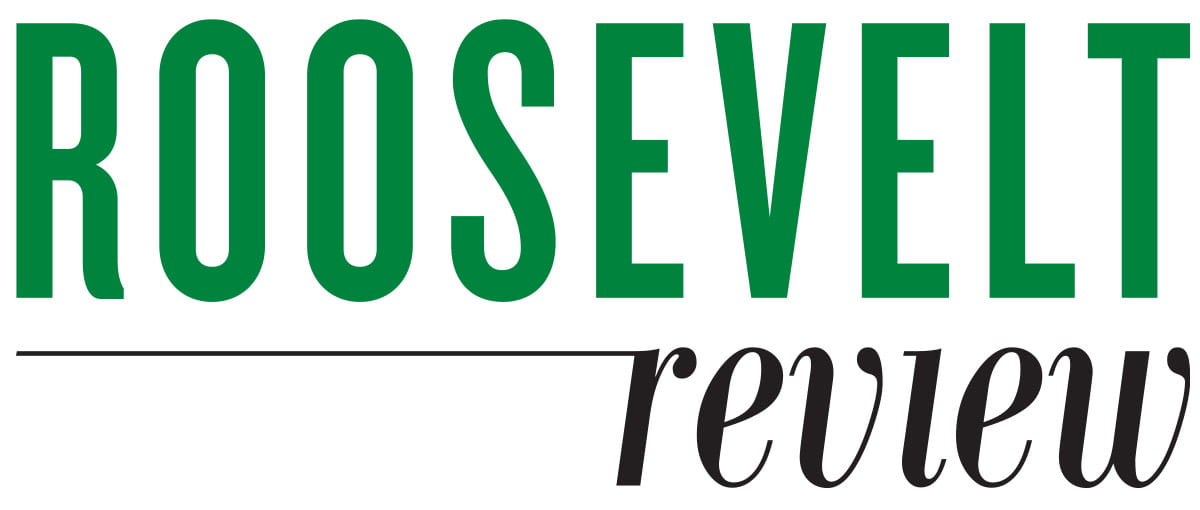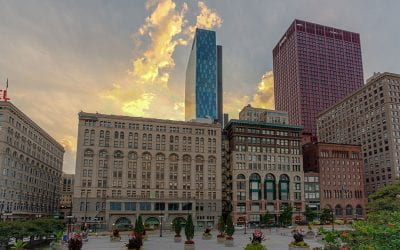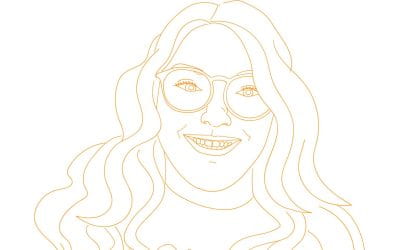Roosevelt is a Student Story
An Interview with Professor Rifat GorenerBy the time Roosevelt University acquired the Auditorium Building in 1946, the architectural gem had fallen into disrepair.
During World War II, the building had gone bankrupt and was acquired by a military USO center. The tenth floor became a barracks. The stained-glass windows and mosaic tile were painted over. The tower — once home to the offices of Dankmar Adler and Louis Sullivan — was abandoned.
To make the building habitable, Roosevelt students came together for “spit and polish” parties. At the time, the college had only existed for a year. The students cleaned up the Auditorium Building and turned it into a home.
“Roosevelt is a student story,” explained Rifat Gorener, associate professor of finance and accounting. “For us, students are not a number. I share my experience with students, and I do learn a great deal from them as well.”
“Roosevelt is a student story. For us, students are not a number.”
— Rifat Gorener
Associate Professor of Finance and Accounting
As chair of Roosevelt’s finance and accounting department, Gorener has seen the University grow during his 12 years as a faculty member. He spoke to the Review about what the Roosevelt student story looks like today.

Associate finance and accounting professor Rifat Gorener
How has Roosevelt’s legacy of belonging evolved since 1945?
Today in my class, I see an undocumented student, a senior citizen coming back to school for a graduate education, I see every background. I once had a student who didn’t have a job and was experiencing housing insecurity. He finished a graduate program at Roosevelt and became a division head for a corporation, fighting fraud.
I have many stories like that. That’s the Roosevelt touch. Here we allow everybody to be the best they can be. With the education and the networking opportunities we provide, these students can be lifted up.
One example is the Clearing Corporation Charitable Foundation (CCCF) Fellowship. The program is a two-year finance honors track for Roosevelt students. Of the 70 students who have participated to date, more than 65% are the first in their families to attend college.
First-generation students come to Roosevelt without connections to financial institutions and
intermediaries. It can be quite difficult to find an internship or a good job because they don’t know anyone. These students’ parents cannot call up friends to get their son or daughter into an internship program.
“First-generation students come to Roosevelt without connections to financial institutions and intermediaries. It can be quite difficult to find an internship or a good job because they don’t know anyone.”
— Rifat Gorener
Associate Professor of Finance and Accounting
The CCCF Fellows receive a cash stipend, participate in professional development workshops, and meet with two mentors — one academic, one executive. Many of us, in our educational lives, never meet a CEO. But at Roosevelt, these undergraduate students can be mentored by C-suite executives, one on one. By graduation, 94% of CCCF Fellows are placed in internships. Roosevelt students have worked at R.J. O’Brien, Northern Trust, BMO Harris and international companies.
How does a global education create a better learning environment?
In order to have a good learning environment and a global education, we need to have diversity and inclusion of international students. What we have here we sometimes take for granted. Ideas about corporate responsibility and ethics are quite different in different cultures. In some cultures, corruption and bribery are a normal part of doing business. My students bring different perspectives that my domestic students have never thought about before.
How can professors create a more inclusive college classroom?
In my view, learning should be fun. We do a lot of group work and teamwork, so people can connect and belong. We hang out, not only in the classroom. We exchange ideas, talk about life, and try to learn from one another.
“In my view, learning should be fun. We hang out, not only in the classroom. We exchange ideas, talk about life, and try to learn from one another.”
— Rifat Gorener
Associate Professor of Finance and Accounting
As an international student, it’s not easy to connect in the community. I’m originally from Turkey, and I went through that challenge, so I’ll try to make that bridge with my international students and others.
I used to talk about my professional experience at the beginning of the class to build rapport with my students. I never mentioned my personal life —I always kept it professional in a finance and accounting framework. I found out with little personal touches, we create a better community, so students can come up and ask questions and be more open.
I think before that, I just appeared as a professor, and now I appear as Rifat. And students can have a direct connection with me.
How do finance and accounting students get involved in the larger community?
Every year, our students provide a free tax-filing service for low-income families. Students train to be volunteer tax preparers and help local Chicagoans through the Internal Revenue Service Volunteer Income Tax Assistance program. Our impact grows each year — in 2019, Roosevelt volunteers provided $109,026 in free tax preparation.
According to the World Economic Forum, at least 5% of the global GDP is lost to corruption. This a significant amount of money and value. If you can make a dent with anti-fraud work, that creates a different environment for everyone globally.
Roosevelt’s Walter E. Heller College of Business offers business education with today’s economy in mind. Our degrees keep a tight focus on practical application and success in today’s global corporate environment that integrates an emphasis on personal and professional integrity, as well as the importance of social responsibility.
More in this section
In Memoriam | Summer 2023
Roosevelt University extends its deepest sympathy to the loved ones of recently deceased alumni and friends.
Building community one glass floor at a time
Nathaniel Thomas lived his freshman year in the Wabash Building, which he describes as “a big, blue, beautiful skyscraper.”


